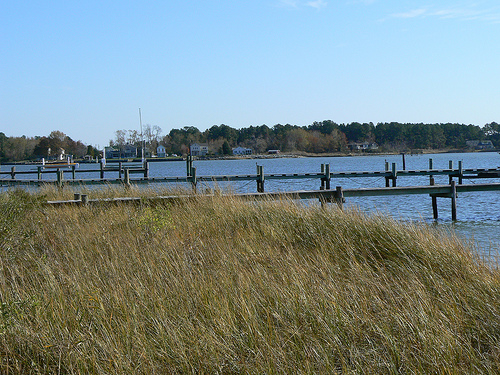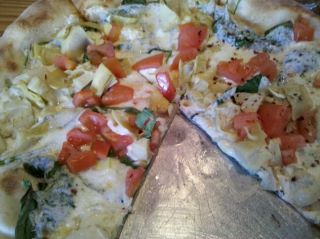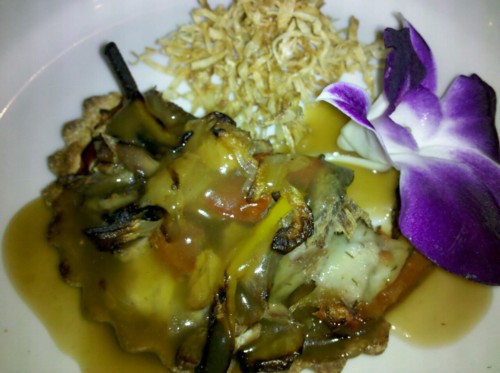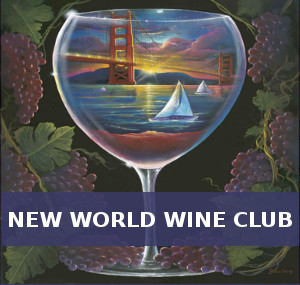One striking feature of traveling down Route 301 about an hour after crossing the Delaware border into Maryland is that all vestiges of suburbia like strip development and shopping centers recede into wide open fields and miles of undisturbed forest. Partially due to the fact that I was headed out here in November to experience the Annual Waterfowl Festival, I immediately thought, “Wow, what great farming and hunting grounds.” This coming from somebody who has never shot a rifle or climbed aboard a tractor. Little did I know that Talbot County’s first impressions were already revealing the underlying culinary treasures brimming forth from this peninsula jutting out into the Chesapeake Bay on Maryland’s Eastern Shore.
Easton: Talbot County’s Premier Downtown
The first town you reach almost immediately upon exiting Route 50 is the historic village of Easton. It’s easy to see how this town earned the distinction of being the “Colonial Capital of the Eastern Shore”. If you take away the cars, it feels like you’re stepping back in time surrounded by turn of the century ornately designed brick buildings flanking many streets while the more residential sections are lined with grand Victorian homes lovingly maintained as they were when they were originally built. Luckily during Waterfowl Festival held each year here in November, you can fully enjoy this pre-car ambiance when all of Harrison Ave. and some side streets are closed off and the sidewalks are filled with local food vendors. Smoke wafting from huge slabs of pit beef and whole turkeys cooking on a smoker the size of an SUV grabbed my attention. Hot Off The Coals from the nearby town of Queen Anne MD not only had the most tender wood-fired smoked turkey sandwiches I’ve ever tasted but were peppering their service with periodic duck calls. Next it was on to the tasting pavilion to sample local wines and grab a bread bowl of crab soup chock full of sweet blue crab meat. However, the tons of waterfowl sculptures artfully made from materials ranging from bronze to wood are a major raison d’être of this festival. Collectors from all across the country come to browse and purchase these true-to-life replicas of waterfowl like Blackwater Woodies and Mergansers. These serve as an inspiration for actual duck decoys used here during the popular duck hunting season that abounds in the coastal tidelands. Idlewild Park, on the fringes of downtown hosted a sportsman’s pavilion filled with hunting gear and a wide assortment of rifles. Also going on throughout the day, a Dock Dogs’ Competition put a roster of water dogs, mostly Labrador retrievers to the challenge, seeing how far they could jump into a tank of water to fetch tennis balls. Out in the field, this particular skill is relied upon to carry just-shot succulent duck back to their masters. Be sure not to miss the Historical Society of Talbot County on Washington Street which provides some illustrative exhibits covering area history. I promise that even museum-phobes will find it intriguing.
St. Michaels: Maritime Community Meets Shopping Village
Heading out away from Easton on Route 33 further down the peninsula past more stretches of undisturbed forest and pastureland, Ava’s Wood Fired Artichoke and Basil Pizza you’ll quite suddenly emerge into downtown St. Michaels. The main route is now a historic thoroughfare flanked on either side by candy shops, funky boutiques, and eclectic eateries. Must visits include the Eastern Shore Brewery, St. Michaels Winery, and Ava’s Pizzeria and Wine Bar, the perfect lunch stop for some wood-fired pizza. St. Michaels Winery is located in an old mill complex and has a Log Canoe-inspired tasting room for sampling vintages like Gollywobbler Pink or their Chocolate Zinfandel.
The Chesapeake Bay Maritime Museum lies a few blocks away on brick sidewalks from the center of town on the banks of the Miles River. Be sure to reserve a full day to experience all the exhibits, many of which are hands-on like climbing up into the 1879 Hooper Straight Lighthouse, ringing its bell, and walking through rooms outfitted just as they stood when the last keeper vacated the premises. You can even peek inside the period oven and poke around in the closets. For the more adventurous, the museum hosts a Lighthouse Overnight Program where you can experience a lighthouse keeper’s rustic life firsthand. Other attractions include a working boatyard where you can get up close and watch teams of volunteers restoring the Skipjack Rosie Parks or talk with a shipwright or visiting captain. Step on board an oyster boat, the E.C. Collier, and enter the world of the working watermen on the Chesapeake Bay. Via video and mechanical motions, it feels like you’re on an actual boat at sea eavesdropping on the captain and crew as orders are shouted; the cook talks about lunch; the crew brings in the dredge and sorts the oysters. One of the accompanying exhibits also illustrates that today’s harvests are one hundredth of what they were at their height in the late 19th century. At Waterman’s Wharf, a recreated crabber’s shanty, try your hand at being a Chesapeake Bay waterman. Check an eel or crab pot to see if you’ve caught anything, or tong for oysters.
Just up the road, the opulent manor-style Inn at Perry Cabin boasts the Eastern Shore’s only 4 diamond restaurant. Sherwood’s Landing, overlooking the Chesapeake is helmed by new executive chef Aaron Mc Cloud who has worked in an impressive lineup of top restaurants from the Vermont mountains down to Victoria and Albert’s in Florida. At an early age, Albert traded in his violin bow as a professional musician, picked up a chefs knife, and carved out a remarkable performance in the culinary arts. His artistry shows through in his world class preparation and presentation of farm-to-fork dishes that change with the seasons. Standouts that I ordered included roasted wild rockfish with pumpkin & apple salad, oyster stew, and a goat cheese mousse dessert plate.
Tilghman Island: Watermen and Local Ingredients
The only hint that you are now on an island is that you cross a bridge over Knapp’s Narrows. Really, it’s a continuation of the peninsula and you are getting closer to the tip. You’ll see a small marina below harboring recreational vessels as well as some commercial fishing boats…a clear sign that the ocean’s presence is ever closer.
The tiny village of Tilghman Island, unlike Talbot County’s other towns, can really be driven through without noticing if you’re not paying attention. But slow down long enough and you’ll discover a couple gems that authentically showcase Chesapeake heritage. One is the Tilghman Watermen’s Museum. If it weren’t for the independent mom and pop fishermen heading out into waters tonging for oysters and catching crabs, fresh local seafood wouldn’t make it to dinner tables and restaurants. Currently housed in what used to be a barbershop, the small exhibit space is crammed with pictures of watermen in action, old pulleys, engine parts, rigging, and other tools of the trade…many of which are still in use today.
The other can’t miss attraction here is the Tilghman Island Inn right on the waterfront of Knapp’s Narrows overlooking marsh and the Chesapeake Bay beyond. Wooden docks right out their back door invite you to linger in a chair at sunset or enjoy your morning coffee in tranquility. The Inn’s primary attraction is their restaurant open to the public with a menu incorporating local seafood and game whenever possible. David McCallum, co-owner and Executive Chef is heavily influenced by his southern roots in South Carolina and New Orleans. Since David grew up on a farm, sourcing fresh produce, eggs, and meat is second nature to him. He has formed partnerships with local growers and fisherman to get just picked vegetables as well as fresh caught rockfish, crabmeat, bluefish, soft shell crabs, oyster and shad roe. He also inventively uses unique regional ingredients like heirloom rice from South Carolina, grains from Minnesota, and grits from Georgia. But don’t come here expecting comfort food in a rustic setting. The dining experience and kitchen prowess is all about white table cloths and international panache influenced by David’s culinary excursions to Europe, South America and Asia. During my visit, in honor of the weekend’s Waterfowl Festival, David hosted a Wild Game and French Wines dinner. Tasty inventive dishes included chick pea dusted frog legs with lemon caper tartar sauce; spicy Brazilian duck tart encrusted in cornmeal; braised rabbit; and my favorite, wild boar sausage with lobster, mustard, and scallion risotto. For me, the big surprise wine pairing with these dishes was an array of Lanquedocs. The dark chocolate red wine mousse served as a crowning touch to the meal.
Photos & Article courtesy of Steve Mirsky.
















